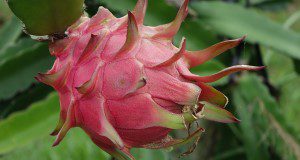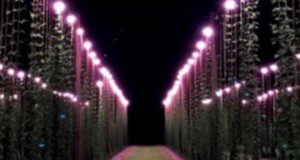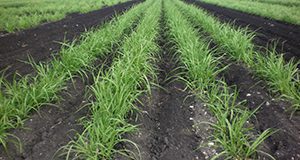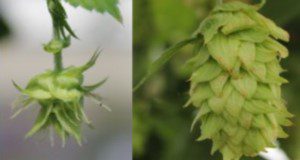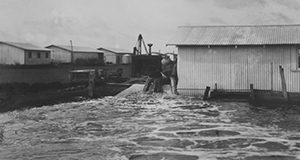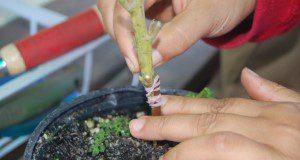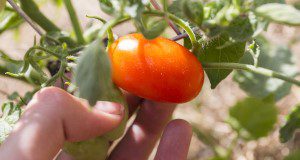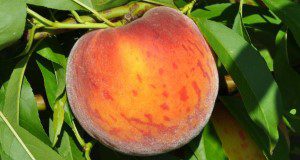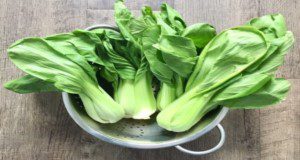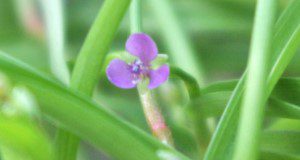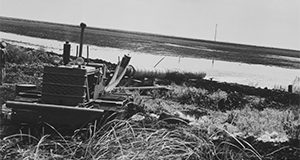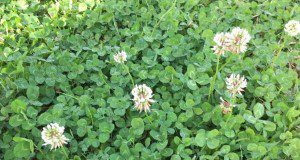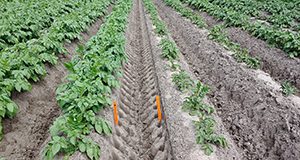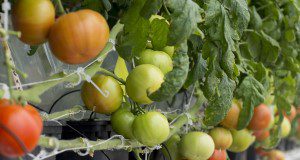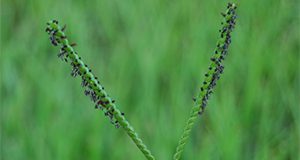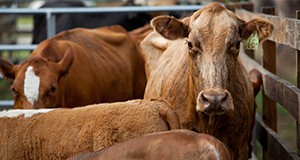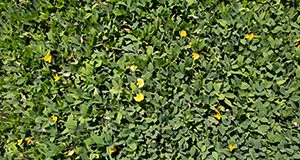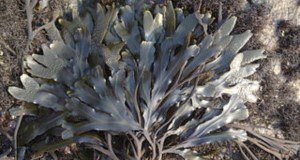Dragon fruit, also known as pitahaya, pitaya, and strawberry pear, is a group of vine-like, climbing cacti. In south Florida, production of dragon fruit has been steadily increasing since the 2000s, and growers in Florida consider dragon fruit as a potential alternative fruit crop to avocado and citrus, two economically important fruit crops largely impacted by laurel wilt and huanglongbing, respectively. This new 4-page article focuses on the symptomology and epidemiology of stem and fruit canker, a prevailing disease on dragon fruit. Suggested management strategies for the disease are also discussed based on recent studies conducted in south Florida. Written by Cheng-Fang Hong, Shouan Zhang, Romina Gazis, Jonathan H. Crane, and Jeff Wasielewski, and published by the UF/IFAS Plant Pathology Department.
https://edis.ifas.ufl.edu/pp355
Category: Crops
Hop Yard Establishment and Trellis Construction in Florida
Hops (Humulus lupulus L.) are an essential ingredient in brewing, adding bitterness and flavor to beer. Driven by the recent craft beer movement, hop production is expanding into nontraditional hop-producing states. In Florida, while commercial hop production is almost nonexistent, the number of craft breweries in Florida increased from 45 in 2011 to 285 in 2018, and the economic impact of Florida’s craft beer industry exceeds $3 billion. This new 7-page article, written by Shinsuke Agehara, Aleyda Acosta-Rangel, Zhanao Deng, Jack Rechcigl, and Simon Bollin and published by the UF/IFAS Horticultural Sciences Department, provides guidelines and considerations for building a hop yard in Florida, using the UF/IFAS Gulf Coast Research and Education Center’s research hop yard as a model.
https://edis.ifas.ufl.edu/hs1354
Sugarcane Cultivar Descriptive Fact Sheet: CP 06-2400, CP 06-2042, and CP 07-2137
This 5-page fact sheet provides basic information and yield and disease information for CP 06-2400, CP 06-2042, and CP 07-2137 to assist growers in better selection and management of these cultivars. Written by Hardev Sandhu, Matt VanWeelden, and Wayne Davidson, and published by the UF/IFAS Agronomy Department, December 2019.
http://edis.ifas.ufl.edu/sc106
Choosing the Right Blackberry Cultivar in Subtropical Florida
Blackberry (Rubus spp.) is a deciduous berry crop and the fourth most economically important berry crop in the United States. Driven by the growing demand for blackberries, production recently expanded to the southeastern United States. In Florida, however, commercial blackberry production is limited primarily to small commercial U-pick operations. The main challenges include insufficient chill hours and poor fruit quality associated with the subtropical climate. This new 6-page article, a publication of the UF/IFAS Horticultural Sciences Department, will discuss important cultivar selection criteria and recommended blackberry cultivars in subtropical Florida. Written by Shinsuke Agehara, Syuan-You Lin, and Zhanao Deng.
https://edis.ifas.ufl.edu/hs1352
Harvest Techniques for Hops (Humulus lupulus)
Hops (Humulus lupulus) are perennial plants commonly harvested for their mature strobiles, also referred to as cones, which are primarily dried and used as a bittering agent and preservative in beer production. The two primary factors of harvest timing and harvest method can have large impacts on the quality and economics of the finished product. The decision of when and how to harvest is important and should rely upon growing-region-specific environmental conditions, physical observations of the cones, and the wants and needs of the individual producer. This new 4-page publication of the UF/IFAS Environmental Horticulture Department describes the primary methods used in hop harvesting, including field, indoor, and machine harvesting. Written by Sean Michael Campbell and Brian J. Pearson.
https://edis.ifas.ufl.edu/ep578
Hurricane Preparedness for Forage Crops in the Southeast United States
This 4-page document provides information on preparing forage crops, conserved forage, and grazing areas for potential hurricane damage and alleviating hurricane damage on forage crops and grazing lands in the Southeast United States, with an emphasis on the Florida peninsula and Gulf Coast. Written by José C. B. Dubeux, Jr. and Edward K. Twidwell, and published by the UF/IFAS Agronomy Department, November 2019.
http://edis.ifas.ufl.edu/ag439
Tropical and Subtropical Fruit Propagation
Propagation is an important technique used by tropical and subtropical fruit growers worldwide, allowing plants to be grown cheaply and efficiently. While sexual propagation (by seed) results in plants that are not genetically the same as the mother plant, asexual propagation (cuttings, division, air-layers, and grafting) creates offspring that are clones of the mother plant. Cloning fruit trees is important because it allows different cultivars to be preserved over time. This new 7-page publication of the UF/IFAS Horticultural Sciences Department explains both sexual and asexual propagation techniques, why they are used, and what type of propagation is best for which species of tropical fruit. Written by Jeff Wasielewski and Carlos Balerdi.
https://edis.ifas.ufl.edu/hs1349
Target Spot of Tomato in Florida
Fresh-market tomatoes bring in $400-$500 million annually as the third most valuable crop in the state. Defoliation and fruit damage from target spot, caused by Corynespora cassiicola, can have serious economic implications for growers. This new 5-page publication of the UF/IFAS Plant Pathology Department, written by Keevan MacKenzie, Jessica Chitwood, Gary Vallad, and Sam Hutton, reviews symptoms and epidemiology of the disease and provides current management recommendations.
https://edis.ifas.ufl.edu/pp351
Variedades de Durazno y Nectarina en la Florida
La Universidad de la Florida ha desarrollado cultivares de nectarina y durazno de alta calidad, bajo requerimiento de horas frio, y de maduracion temprana que pueden cultivarse desde el Panhandle de la Florida (noroeste del estado) tan al sur como Immokalee. Cultivares de bajas horas frio pueden crecer y producir fruta bajo las condiciones de la Florida que son mucho mas calidas en el invierno que en estados mas al norte. This 18-page fact sheet, translated by Tatiana Sanchez and published by the UF/IFAS Horticultural Sciences Department, is the Spanish-language version of CIR1159, Florida Peach and Nectarine Varieties, written by Ali Sarkhosh, Mercy Olmstead, Jose Chaparro, Pete Andersen, and Jeff Williamson.
https://edis.ifas.ufl.edu/hs1346
Bok Choy, an Asian Leafy Green Vegetable Emerging in Florida
Asian vegetable crops are rapidly expanding in Florida in the last decade due to their health benefits combined with their high profitability. These crops can help increase vegetable growers’ income and diversify Florida’s crop production, and they are new to most Floridians. This new 5-page article provides a general overview of bok choy for vegetable growers, crop consultants, certified crop advisors, Extension agents, and graduate students. Written by Hai Liu and Guodong Liu and published by the UF/IFAS Horticultural Sciences Department.
https://edis.ifas.ufl.edu/hs1337
Biology and Management of Doveweed (Murdannia nudiflora) in Ornamental Crop Production
Doveweed is a common warm-season annual weed in Florida landscapes, container nurseries, and other agricultural production systems. This new 5-page article is written for green industry professionals and others to aid in the identification and management of doveweed in and around ornamental plants. Preemergence and postemergence herbicides are covered, as well as basic information on doveweed biology and growth. Written by Yuvraj Khamare, Chris Marble, Nathan Boyd, and Shawn Steed, and published by the UF/IFAS Environmental Horticulture Department.
https://edis.ifas.ufl.edu/ep576
Rice Physiology, Products, and Critical Steps Associated with Postharvest Operations in Southern Florida
This 5-page document pertains to the UF/IFAS Extension programs related to rice production in the EAA and focuses on the steps that comprise postharvest processing of rice (drying, tempering, milling, and storage). It aims to highlight the physiology of the rice kernel and define some of the common terms used in the rice industry, elaborate on the steps in postharvest processing, and provide a brief overview of rice products and their market potential. Written by Jehangir H. Bhadha, Sangeeta Mukhopadhyay, Charlene Andrews, and Matthew VanWeelden, and published by the UF/IFAS Agronomy Department, September 2019.
http://edis.ifas.ufl.edu/ag438
Weeds as Reservoirs of Plant Pathogens Affecting Economically Important Crops
Weeds are a major contributor to yield loss and reduction in yield quality in an agricultural setting, competing with the crop for resources like light, water, and nutrients. This competition, along with the cost of weed management strategies like tillage and herbicides, is responsible for the economic impact of weeds, which can reach into the billions. Weeds can also harm crop plants by acting as reservoirs for destructive plant pathogens, the insect vectors that move these pathogens from plant to plant, or both. This new 7-page publication of the UF/IFAS Horticultural Sciences Department, written by Morgan Byron, Danielle Treadwell, and Peter Dittmar, summarizes previously published weed-pathogen associations to help growers scout and monitor pathogens in weeds near production areas.
https://edis.ifas.ufl.edu/hs1335
Nematode Management in Potatoes (Irish or White)
Plant-parasitic nematodes are a major pest on potatoes in Florida. Root-knot, sting, and stubby-root nematodes are the primary problems. Sampling is an important component of confirming nematode problems in a field. Nematode management relies heavily on chemical control (nematicides), but crop rotation and soil culture are important considerations as well. This 12-page fact sheet about nematode management in potatoes was written by Zane J. Grabau and J.W. Noling and published by the UF Department of Entomology and Nematology.
http://edis.ifas.ufl.edu/ng029
Risk Management Planning for Agricultural Business Owners
Risk identification is the beginning point for risk management planning because solution identification begins with knowledge of the problem. This 4-page document presents questions to consider regarding production risk, price or market risk, financial risk, legal risk, and human risk. Written by Martie Gillen and Beatrice Pierre, and published by the UF/IFAS Department of Family, Youth and Community Sciences, August 2019.
http://edis.ifas.ufl.edu/fy1485
Current Status of Research, Regulations, and Future Challenges for CRISPR Gene Editing in Crop Improvement
Recently, new plant-breeding technology such as CRISPR gene editing has provided the potential to substantially improve crop breeding in agriculture. Considerable efforts have been devoted to apply this gene-editing technology in modern agriculture to increase crop yields and improve the quality of food ingredients, especially by many of the major agronomic seed-producing companies. In this new 4-page article, we outline the recent research updates and regulations on gene editing in crop improvement. Written by Sadikshya Sharma, Heqiang Huo, and Seonghee Lee and published by the UF/IFAS Horticultural Sciences Department.
https://edis.ifas.ufl.edu/hs1334
Bahiagrass (Paspalum notatum Flueggé): Overview and Pasture Management
This 10-page document discusses bahiagrass forage cultivars, forage production, nutritive value, animal performance, planting, pasture renovation, management, and more. Written by Marcelo Wallau, Joao Vendramini, José Dubeux, and Ann Blount, and published by the UF/IFAS Agronomy Department, revised July 2019.
http://edis.ifas.ufl.edu/ag342
Estimating Herbage Mass on Pastures to Adjust Stocking Rate
This new 6-page document explains methods to measure forage mass and utilize that information to estimate an adequate stocking rate. Written by Jose Dubeux, Marcelo Wallau, João Vendramini, Liliane Silva, Jane Griffin, Nicolas DiLorenzo, and Erick Santos, and published by the UF/IFAS Agronomy Department, June 2019.
http://edis.ifas.ufl.edu/ag434
Methods of Forage Moisture Testing
Determining forage moisture is an essential procedure for estimating forage mass in pastures, determining harvesting or baling point for preserved forages, and calculating dry matter of feedstuff for total mixed rations. This 3-page document discusses methods and pieces of equipment available to estimate forage moisture. Written by M. Wallau and J. Vendramini, and published by the UF/IFAS Agronomy Department, revised June 2019.
http://edis.ifas.ufl.edu/ag181
Plant Biostimulants: Definition and Overview of Categories and Effects
This new 4-page article provides an overview of a group of crop production materials termed “plant biostimulants,” which are frequently promoted as environment-friendly alternatives to chemical-based products. It explains their regulatory status and presents an overview of the most popular materials (e.g., beneficial fungi, seaweeds, and silicon) and their effects on plants. Written by Ute Albrecht and published by the UF/IFAS Horticultural Sciences Department.
http://edis.ifas.ufl.edu/hs1330
